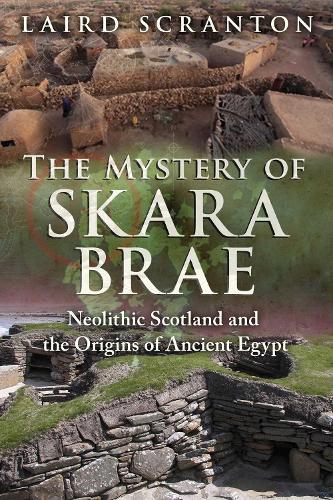
The Mystery of Skara Brae: Neolithic Scotland and the Origins of Ancient Egypt
(Paperback)
Publishing Details
The Mystery of Skara Brae: Neolithic Scotland and the Origins of Ancient Egypt
By (Author) Laird Scranton
Inner Traditions Bear and Company
Inner Traditions Bear and Company
24th November 2016
United States
Classifications
General
Non Fiction
Ancient history
936.1132
Physical Properties
Paperback
208
Width 152mm, Height 229mm, Spine 13mm
342g
Description
An investigation of the origins of the Neolithic farming village on Orkney Island
Reveals the striking similarities between Skara Brae and the traditions of pre-dynastic ancient Egypt as preserved by the Dogon people of Mali
Explains how megalithic stone sites near Skara Brae conform to Dogon cosmology
Examines the similarities between Skara Brae and Gobekli Tepe and how Skara Brae may have been a secondary center of learning for the ancient world
In 3200 BC, Orkney Island off the coast of Northern Scotland was home to a small farming village called Skara Brae. For reasons unknown, after nearly six centuries of continuous habitation, the village was abandoned around 2600 BC and its stone structures covered over--perhaps deliberately, like the structures at Gobekli Tepe. Although now well-excavated, very little is known about the peaceful people who lived at Skara Brae or their origins. Who were they and where did they go
Drawing on his in-depth knowledge of the connections between the cosmology and linguistics of Egyptian, Dogon, Chinese, and Vedic traditions, Laird Scranton reveals the striking similarities between Skara Brae and the Dogon of Mali, who still practice the same cosmology and traditions they once shared with pre-dynastic Egypt. He shows how the earliest Skara Brae houses match the typical Dogon stone house as well as Schwaller de Lubiczs intrepretation of the Egyptian Temple of Man at Luxor. He explains how megalithic stone sites near Skara Brae conform to Dogon cosmology, each representing sequential stages of creation as described by Dogon priests, and he details how the houses at Skara Brae also represent a concept of creation. Citing a linguistic phenomenon known as ultraconserved words, the author compares words of the Faroese language at Skara Brae, a language with no known origin, with important cosmological words from Dogon and ancient Egyptian traditions, finding obvious connections and similarities.
Scranton shows how the cultivated field alongside the village of Skara Brae corresponds to the heavenly field symbolism pervasive throughout many ancient cultures, such as the Field of Reeds of the ancient Egyptians and the Elysian Fields of ancient Greece. He demonstrates how Greek and Egyptian geographic descriptions of these fields are a consistent match with Orkney Island. Examining the similarities between Skara Brae and Gobekli Tepe, Scranton reveals that Skara Brae may have been a secondary center of initiation and civilizing knowledge, a long-lost Egyptian mystery school set up millennia after Gobekli Tepe was ritually buried, and given the timing of the site, is possibly the source of the first pharaohs and priests of ancient Egypt.
Reviews
Antiquarian scholar Laird Scranton has done it again. In his latest book, The Mystery of Skara Brae, he takes the reader to one of the most remote locations in the British Isles, then proceeds to lay out the heretofore unknown story of a well-organized yet mysterious culture that flourished off the western coast of Scotland, only to decamp forever around 2600 BCE. Who were the inhabitants of Skara Brae, and what connection did they have with the peoples who went on to create ancient Egypt What knowledge did they share with the ancient African tribe the Dogon Where did they come from, and to where did they disappear Scranton guides us through time and tradition in an account that both novices and scholars will embrace. . . . marvelous and highly educational. I would recommend it unhesitatingly to anyone interested in ancient mysteries. * Peter Robbins, coauthor of Left at East Gate *
If you are interested in ancient mysteries, then you must read the writings of Laird Scranton. . . . The Mystery of Skara Brae is a welcome addition to his amazing library of work. Connections between ancient cultures that would not seem to be related at first glance have long fascinated me, and no one explores these connections better than Laird, both in his scholarship and level of detail. If you want to explore the evidence on the eerie similarities between ancient civilizations, get your copy of The Mystery of Skara Brae today. * Jim Harold, host of The Paranormal Podcast *
Author Bio
Laird Scranton is the author of a series of books on ancient cosmology and language, including The Science of the Dogon, Point of Origin, and Chinas Cosmological Prehistory. He has presented at conferences throughout the United States and is a frequent guest on Red Ice Radio and Coast to Coast AM. He lives in Albany, New York.
